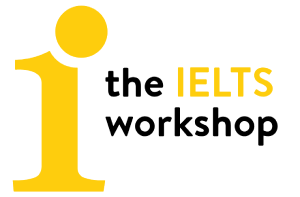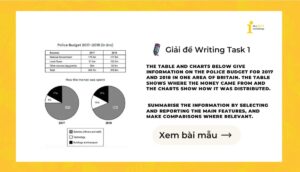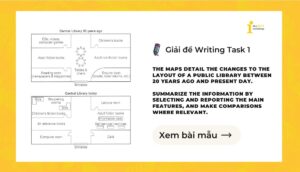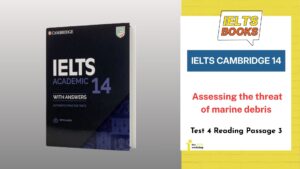Bài viết dưới đây là đáp án và phân tích chi tiết trong IELTS Cambridge 17 Test 4 Reading Passage 3: Timur Gareyev – blindfold chess champion . Hy vọng bài viết này hỗ trợ bạn trong việc ôn tập và chinh phục kỳ thi IELTS sắp đến. Đừng quên theo dõi The IELTS để cập nhật các chủ đề kiến thức về IELTS nói riêng và tiếng Anh nói chung nhé!
Đáp án IELTS Cambridge 17 Test 4 Reading Passage 3
| Câu hỏi | Đáp án |
| 27 | D |
| 28 | E |
| 29 | F |
| 30 | B |
| 31 | H |
| 32 | E |
| 33 | False |
| 34 | Not given |
| 35 | 34 Not given |
| 36 | True |
| 37 | memory |
| 38 | numbers |
| 39 | communication |
| 40 | visual |
Phân tích chi tiết IELTS Cambridge 17 Test 4 Reading Passage 3
Câu 27 – Đáp án: D
Tiếng Anh: “a reference to earlier examples of blindfold chess”
Dịch: “tham chiếu đến những ví dụ trước đó về cờ bịt mắt”
Vị trí: Đoạn D
Transcript: Đoạn này nhắc đến những ván cờ bịt mắt được chơi từ thế kỷ 18 và các kỳ thủ lừng danh trong lịch sử.
Phân tích: Đoạn D, 2 câu cuối có đề cập đến thông tin về trò chơi được tổ chức lần đầu ở thế kỷ 13 và một người chơi cụ thể đã chơi 45 trận, thắng 39 trận trong 24 giờ.
Đây là ví dụ cụ thể của trò chơi trong lần đầu tiên tổ chức.
Câu 28 – Đáp án: E
Tiếng Anh: “an outline of what blindfold chess involves”
Dịch: “phác thảo sơ lược cờ bịt mắt gồm những gì”
Vị trí: Đoạn E
Transcript: Ở đây mô tả các quy tắc cơ bản của cờ bịt mắt, ví dụ như “players must remember positions without nhìn bàn cờ.”
Phân tích: E đúng vì có miêu tả về cách chơi.
Câu 29 – Đáp án: F
Tiếng Anh: “a claim that Gareyev’s skill is limited to chess”
Dịch: “khẳng định rằng kỹ năng của Gareyev chỉ giới hạn trong cờ”
Vị trí: Đoạn F
Transcript: Có câu nói rằng “some people think his ability is confined to chess only.”
Phân tích: Đoạn F, câu 3-6 chỉ ra rằng khi tham gia các thí nghiệm về trí nhớ, Gareyev cũng không thể hiện tốt hơn nhưng người bình thường, và các nhà khoa học cũng nhận định rằng họ không tìm ra được anh ta có tài năng gì ngoài việc chơi cờ vua.
Điều này đồng nghĩa với việc kĩ năng của Gareyev chỉ bị hạn chế trong việc chơi cờ vua.
Câu 30 – Đáp án: B
Tiếng Anh: “why Gareyev’s skill is of interest to scientists”
Dịch: “tại sao kỹ năng của Gareyev lại thú vị với các nhà khoa học”
Vị trí: Đoạn B
Transcript: Nêu rằng các nhà nghiên cứu quan tâm vì “his ability could reveal how memory and visualisation work together.”
Phân tích: B đúng vì giải thích lý do sau nghiên cứu.
Câu 31 – Đáp án: H
Tiếng Anh: “an outline of Gareyev’s priorities”
Dịch: “phác thảo về ưu tiên của Gareyev”
Vị trí: Đoạn H
Transcript: Tại đây, anh ấy nhắc đến mục tiêu cá nhân như “setting new records” và cân bằng với “family life.”
Phân tích: H mô tả cụ thể các ưu tiên của anh.
Câu 32 – Đáp án: E
Tiếng Anh: “a reason why the last part of a game may be difficult”
Dịch: “lý do tại sao phần cuối của một ván cờ có thể khó khăn”
Vị trí: Đoạn E
Transcript: Ở đoạn E có nhấn mạnh việc “mental fatigue increases toward the end,” gây khó khăn.
Phân tích: E bao gồm lý do tâm trí mệt mỏi.
Câu 33 – Đáp án: FALSE
Tiếng Anh: “In the forthcoming games, all the participants will be blindfolded.”
Dịch: “Trong các trận sắp tới, tất cả người tham gia sẽ bị bịt mắt.”
Transcript: Không có thông tin này; chỉ đề cập đến Gareyev.
Phân tích: Đoạn A, câu 3 chỉ ra rằng những người thử thách Goreyev sẽ chơi như bình thường (không bịt mắt), chỉ có anh ta sẽ bị bịt mắt. Thông tin này đối ngược với câu hỏi, vì không phải tất cả mọi người đều bị bịt mắt.
Câu 34 – Đáp án: NOT GIVEN
Tiếng Anh: “Gareyev has won competitions in BASE jumping.”
Dịch: “Gareyev đã thắng các cuộc thi nhảy BASE.”
Transcript: Không nhắc đến BASE jumping.
Phân tích: Không đủ dữ kiện → NOT GIVEN.
Câu 35 – Đáp án: NOT GIVEN
Tiếng Anh: “UCLA is the first university to carry out research into blindfold chess players.”
Dịch: “UCLA là trường đại học đầu tiên nghiên cứu về người chơi cờ bịt mắt.”
Transcript: Không đề cập đến UCLA.
Phân tích: Không đủ thông tin → NOT GIVEN.
Câu 36 – Đáp án: TRUE
Tiếng Anh: “Good chess players are likely to be able to play blindfold chess.”
Dịch: “Người chơi cờ giỏi có thể chơi cờ bịt mắt.”
Vị trí: Đoạn B
Transcript: Có câu “experienced players often manage blindfold games easily.”
Phân tích: Đoạn B, câu 3-4 nói rằng việc chơi cờ với điều kiện nhắm mắt không phải là khó khăn với hầu hết người chơi cờ vua giỏi. Điều này đồng nghĩa với việc họ rất có thể chơi được môn này dưới điều kiện như trên.
Câu 37 – Đáp án: memory
Tiếng Anh: “The researchers started by testing Gareyev’s ___;”
Dịch: “Các nhà nghiên cứu bắt đầu bằng cách kiểm tra ___ của Gareyev;”
Vị trí: Summary (câu đầu)
Transcript: “They tested his memory, requiring recall of sequences.”
Phân tích: Đoạn F, câu 1 chỉ việc các nhà khoa học đầu tiên muốn Gareyev thực hiện một số bài kiểm tra memory (trí nhớ) thông thường.
Câu 38 – Đáp án: numbers
Tiếng Anh: “…recall a string of ___ in order and also in reverse order.”
Dịch: “…nhớ một dãy ___ theo thứ tự và cả ngược lại.”
Vị trí: Đoạn F, câu 3
Transcript: Có ví dụ “a sequence of numbers.”
Phân tích: Đoạn F, câu 3 nói rằng một ví dụ của việc kiểm tra trí nhớ là kiểm tra số lượng numbers (số) mà một người có thể nhắc lại, theo hoặc ngược thứ tự, ngay sau khi nghe chúng.
Câu 39 – Đáp án: communication
Tiếng Anh: “scans showed an unusual amount of ___ within the areas of Gareyev’s brain that are concerned with directing attention.”
Dịch: “các bản quét cho thấy lượng bất thường của ___ trong vùng não điều khiển sự tập trung.”
Vị trí: Summary
Transcript: Nói về “unusual amount of communication [connections] in attention areas.” Phân tích: “communication” đúng theo văn bản.
Câu 40 – Đáp án: visual
Tiếng Anh: “the parts of his brain that deal with ___ input.”
Dịch: “những phần não xử lý đầu vào ___.”
Vị trí: Đoạn G, câu 3
Transcript: “strength in brain parts that deal with visual input.”
Phân tích: Đoạn G, câu 3 chỉ ra việc bộ phận não của Goreyev mà xử lý các hình ảnh “visual” (trực quan) sẽ có thể mạnh mẽ hơn bình thường.
Bản dịch chi tiết IELTS Cambridge 17, Test 4, Reading Passage 3
A. Next month, a chess player named Timur Gareyev will take on nearly 50 opponents at once. But that is not the hard part. (Q33) While his challengers will play the games as normal, Gareyev himself will be blindfolded. Even by world record standards, it sets a high bar for human performance. The 28-year-old already stands out in the rarefied world of blindfold chess. He has a fondness for bright clothes and unusual hairstyles, and (Q34) he gets his kicks from the adventure sport of BASE jumping. He has already proved himself a strong chess player, too. In a 10-hour chess marathon in 2013, Gareyev played 33 games in his head simultaneously. He won 29 and lost none. The skill has become his brand: he calls himself the Blindfold King.
Vào tháng tới, một kỳ thủ cờ vua tên là Timur Gareyev sẽ đối đầu với gần 50 đối thủ cùng một lúc. Nhưng đó không phải là phần khó. Trong khi những người thách đấu sẽ chơi trò chơi này như bình thường, thì bản thân Gareyev sẽ bị bịt mắt. Ngay cả theo tiêu chuẩn kỷ lục thế giới, nó cũng đặt ra một tiêu chuẩn cao cho hiệu suất của con người. Người đàn ông 28 tuổi đã nổi bật trong thế giới cờ bịt mắt hiếm có. Anh ấy thích quần áo sáng màu và kiểu tóc khác thường, và anh ấy thích môn thể thao mạo hiểm như nhảy BASE. Anh ấy cũng đã chứng tỏ mình là một kỳ thủ cờ vua mạnh mẽ. Trong cuộc thi cờ vua kéo dài 10 giờ vào năm 2013, Gareyev đã chơi 33 ván cùng một lúc. Anh thắng 29 và không thua. Kỹ năng đã trở thành thương hiệu của anh ấy: anh ấy tự gọi mình là Vua Bịt mắt.
- get one’s kicks from something: thích
B. (Q30) But Gareyev’s prowess has drawn interest from beyond the chess playing community. In the hope of understanding how he and others like him can perform such mental feats, researchers at the University of California in Los Angeles (UCLA) called him in for tests. They now have their first results. The ability to play a game of chess with your eyes closed is not a far reach for most accomplished players,’ said Jesse Rissman, who runs a memory lab at UCLA. But the thing that’s so remarkable about Timur and a few other individuals is the number of games they can keep active at once. To me it is simply astonishing.’
Nhưng sức mạnh của Gareyev đã thu hút sự quan tâm từ bên ngoài cộng đồng chơi cờ. Với hy vọng hiểu được làm thế nào anh ta và những người khác như anh ta có thể thực hiện những kỳ công về tinh thần như vậy, các nhà nghiên cứu tại Đại học California ở Los Angeles (UCLA) đã gọi anh ta đến để kiểm tra. Bây giờ họ đã có kết quả đầu tiên. Jesse Rissman, người điều hành một phòng thí nghiệm trí nhớ tại UCLA, cho biết khả năng chơi cờ vua mà nhắm mắt lại không phải là một điều quá xa vời đối với hầu hết những người chơi giỏi. Nhưng điều đáng chú ý về Timur và một vài cá nhân khác là số lượng trò chơi mà họ có thể chơi cùng một lúc. Đối với tôi nó thực sự đáng kinh ngạc.
- prowess (noun) /ˈpraʊəs/: sức mạnh
- accomplished (adj) /əˈkʌmplɪʃt/: giỏi
C. Gareyev learned to play chess in his native Uzbekistan when he was six years old. Tutored by his grandfather, he entered his first tournament aged eight and soon became obsessed with competitions. At 16, he was crowned Asia’s youngest ever chess grandmaster. He moved to the US soon after, and as a student helped his university win its first national chess championship. In 2013, Gareyev was ranked the third best chess player in the US.
Gareyev học chơi cờ vua ở quê hương Uzbekistan khi anh mới 6 tuổi. Được ông nội dạy dỗ, anh tham gia giải đấu đầu tiên khi mới 8 tuổi và nhanh chóng bị ám ảnh bởi các cuộc thi. Năm 16 tuổi, anh được trao danh hiệu kiện tướng cờ vua trẻ nhất châu Á. Anh chuyển đến Mỹ ngay sau đó, và khi còn là sinh viên, anh đã giúp trường đại học của anh giành chức vô địch cờ vua quốc gia đầu tiên. Năm 2013, Gareyev được xếp hạng là kỳ thủ cờ vua giỏi thứ ba ở Mỹ.
- crown (verb) /kraʊn/: trao danh hiệu cho ai
D. To the uninitiated, blindfold chess seems to call for superhuman skill. But displays of the feat go back centuries. The first recorded game in Europe was played in 13th-century Florence. In 1947, the Argentinian grandmaster Miguel Najdorf played 45 simultaneous games in his mind, winning 39 in the 24-hour session.
Đối với những người mới bắt đầu, cờ vua bịt mắt dường như đòi hỏi kỹ năng siêu phàm. Nhưng màn trình diễn kỳ tích như thế đã có từ nhiều thế kỷ trước. Trận cờ vua đầu tiên được ghi lại ở châu Âu được chơi ở Florence vào thế kỷ 13. Năm 1947, đại kiện tướng người Argentina Miguel Najdorf đã chơi 45 trận cùng lúc, giành chiến thắng 39 trận trong 24 giờ.
- superhuman (adj) /ˌsuːpəˈhjuːmən/: siêu phàm
E. (Q36) Accomplished players can develop the skill of playing blind even without realising it. The nature of the game is to run through possible moves in the mind to see how they play out. From this, regular players develop a memory for the patterns the pieces make, the defences and attacks. ‘You recreate it in your mind,’ said Gareyev. ‘A lot of players are capable of doing what I’m doing’. The real mental challenge comes from playing multiple games at once in the head. Not only must the positions of each piece on every board be memorised, they must be recalled faithfully when needed, updated with each player’s moves, and then reliably stored again, so the brain can move on to the next board. First moves can be tough to remember because they are fairly uninteresting. (Q32) But the ends of games are taxing too, as exhaustion sets in. When Gareyev is tired, his recall can get patchy. He sometimes makes moves based on only a fragmented memory of the pieces’ positions.
Người chơi giỏi có thể phát triển kỹ năng chơi khi bị bịt mắt mà không nhận ra điều đó. Bản chất của trò chơi là nhớ nhanh các bước đi có thể có trong tâm trí để xem chúng diễn ra như thế nào. Từ đó, những người chơi thường xuyên phát triển trí nhớ về cách sắp xếp các quân cờ, cách phòng thủ và các cuộc tấn công. Gareyev nói: Bạn tạo lại nó trong tâm trí của mình. Rất nhiều cầu thủ có khả năng làm những gì tôi đang làm. Thử thách tinh thần thực sự đến từ việc chơi nhiều trận cùng một lúc trong đầu. Không chỉ phải ghi nhớ vị trí của từng quân cờ trên mỗi bàn cờ mà người chơi phải nhớ lại một cách trung thực khi cần thiết, cập nhật với từng nước đi của người kia và sau đó được lưu trữ lại một cách đáng tin cậy trước khi não bộ có thể chuyển sang bàn cờ tiếp theo. Những bước di chuyển đầu tiên có thể khó nhớ vì chúng khá không thú vị. Nhưng phần cuối có thể khó khăn, vì người chơi bắt đầu kiệt sức. Khi Gareyev mệt mỏi, khả năng nhớ lại của anh ta có thể trở nên loang lổ/ thiếu. Đôi khi anh ta thực hiện các bước di chuyển chỉ dựa trên một bộ nhớ phân mảnh về vị trí của các quân cờ.
- patchy (adj) /ˈpætʃi/: loang lổ
F (Q37) The scientists first had Gareyev perform some standard memory tests. These assessed his ability to hold numbers, pictures and words in mind. (Q38) One classic test measures how many numbers a person can repeat, both forwards and backwards, soon after hearing them. Most people manage about seven. ‘He was not exceptional on any of these standard tests,’ said Rissman. (Q29) ‘We didn’t find anything other than playing chess that he seems to be supremely gifted at.’ But next came the brain scans. With Gareyev lying down in the machine, Rissman looked at how well connected the various regions of the chess player’s brain were. Though the results are tentative and as yet unpublished, (Q39) the scans found much greater than average communication between parts of Gareyev’s brain that make up what is he frontoparietal control network. Of 63 people scanned alongside the chess player, only one or two scored more highly on the measure. ‘You use this network in almost any complex task. It helps you to allocate attention, keep rules in mind, and work out whether you should be responding or not,’ said Rissman.
Đầu tiên, các nhà khoa học đã yêu cầu Gareyev thực hiện một số bài kiểm tra trí nhớ. Những điều này đánh giá khả năng ghi nhớ các con số, hình ảnh và từ ngữ của anh ấy. Một bài kiểm tra cổ điển đo xem một người có thể lặp lại bao nhiêu con số, cả số tiến và số lùi, ngay sau khi nghe chúng. Hầu hết mọi người có thể nhớ được khoảng bảy. Rissman nói: “Anh ấy không phải là người xuất sắc trong bất kỳ bài kiểm tra tiêu chuẩn nào. Chúng tôi không tìm thấy gì khác ngoài việc anh ấy dường như có năng khiếu siêu phàm trong việc chơi cờ.” Nhưng tiếp theo, họ quét não. Gareyev nằm trong một cái máy, Rissman xem xét mức độ kết nối của các vùng khác nhau trong não của người chơi cờ vua. Mặc dù kết quả chỉ mang tính chất dự kiến và chưa được công bố, nhưng kết quả quét cho thấy sự liên lạc lớn hơn nhiều so với mức trung bình giữa các phần trong não của Gareyev tạo nên mạng lưới điều khiển trực diện của anh ta. Trong số 63 người được quét cùng với người chơi cờ, chỉ có một hoặc hai người đạt điểm cao hơn so với thước đo. Rissman nói: ‘Bạn sử dụng mạng kết nối này trong hầu hết mọi nhiệm vụ phức tạp. Nó giúp bạn phân bổ sự chú ý, ghi nhớ các quy tắc và tìm ra liệu bạn có nên phản hồi hay không.
- tentative (adj) /ˈtentətɪv/: mang tính dự kiến
G. It was not the only hint of something special in Gareyev’s brain. The scans also suggest that Gareyev’s visual network is more highly connected to other brain parts than usual. Initial results suggest that (Q40) the areas of his brain that process visual images – such as chess boards – may have stronger links to other brain regions, and so be more powerful than normal. While the analyses are not finalised yet, they may hold the first clues to Gareyev’s extraordinary ability
Đó không phải là gợi ý duy nhất về điều gì đó đặc biệt trong não của Gareyev. Kết quả quét cũng cho thấy mạng lưới thị giác của Gareyev có mối liên hệ chặt chẽ với các bộ phận não khác hơn bình thường. Kết quả ban đầu cho thấy rằng các vùng não xử lý hình ảnh trực quan của anh ta – chẳng hạn như bàn cờ – có thể có liên kết mạnh hơn với các vùng não khác, và do đó mạnh hơn bình thường. Mặc dù các phân tích vẫn chưa được hoàn thiện, nhưng chúng có thể nắm giữ những manh mối đầu tiên về khả năng phi thường của Gareyev
H. For the world record attempt, Gareyev hopes to play 47 blindfold games at once in about 16 hours. He will need to win 80% to claim the title. I don’t worry too much about the winning percentage, that’s never been an issue for me,’ he said. “The most important part of blindfold chess for me is that I have found the one thing that I can fully dedicate myself to. I miss having an obsession.’
Đối với nỗ lực lập kỷ lục thế giới, Gareyev hy vọng sẽ chơi 47 trận cờ bịt mắt cùng một lúc trong khoảng 16 giờ. Anh ấy sẽ cần 80% chiến thắng để giành được danh hiệu. Anh ý nói: “Tôi không quá lo lắng về tỷ lệ chiến thắng, đó chưa bao giờ là vấn đề đối với tôi. Phần quan trọng nhất của cờ vua bịt mắt đối với tôi là đó là thứ duy nhất mà tôi có thể cống hiến hết mình. Tôi nhớ mình đã bị ám ảnh.”
Series giải đề IELTS Cambridge 17
- [PDF + Audio] Cambridge IELTS 17 – Cambridge Practice Tests For IELTS 17 With Answers
- Đáp án Cambridge 17 & Lời giải chi tiết: Test 1 – Test 4
- IELTS Cambridge 17, Test 4, Listening Part 1: Easy Life Cleaning Services
- IELTS Cambridge 17, Test 4, Listening Part 2: Hotels
- IELTS Cambridge 17, Test 4, Listening Part 3: Sporting activities at school
- IELTS Cambridge 17, Test 4, Listening Part 4: Maple syrup
- IELTS Cambridge 17, Test 4, Reading Passage 1: Bats to the rescue
- IELTS Cambridge 17, Test 4, Reading Passage 2: Does education fuel economic growth?
- IELTS Cambridge 17, Test 4, Reading Passage 3: Timur Gareyev – blindfold chess champion
- [PDF + Audio] Trọn bộ Cambridge Practice Tests For IELTS 1 – 20 mới nhất
Bạn có thể tham gia khóa HỌC IELTS MIỄN PHÍ cùng các giáo viên 9.0 tại Website The IELTS Workshop để nắm vững phương pháp học cũng như các kỹ năng làm bài thi IELTS từ thầy cô nhé!



![[PDF + Audio] Trọn bộ Cambridge Practice Tests For IELTS 1 – 20 mới nhất](https://onthiielts.com.vn/wp-content/uploads/2020/04/cam-1-14-764x400.jpg)
![[PDF + Audio] Cambridge IELTS 20: Cập nhật mới nhất (Bản đẹp)](https://onthiielts.com.vn/wp-content/uploads/2025/07/Cambridge-IELTS-20-300x169.jpg)




